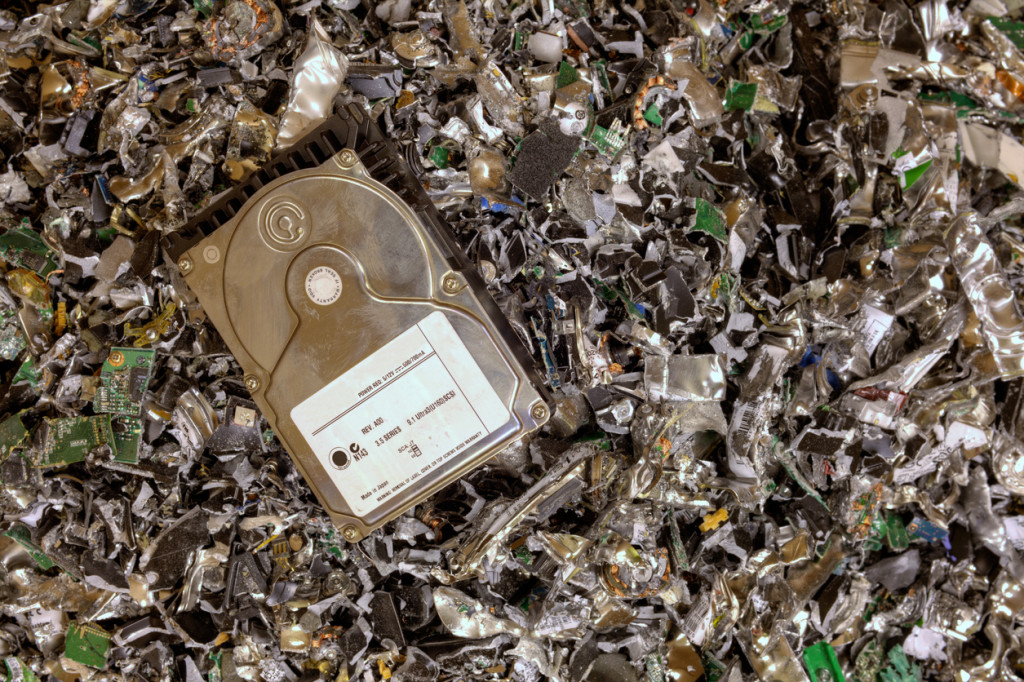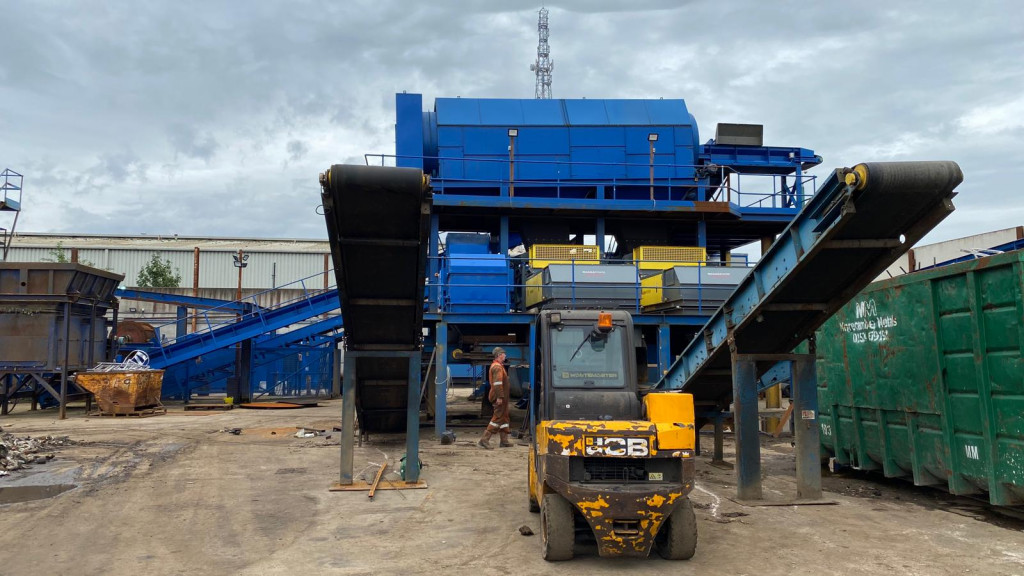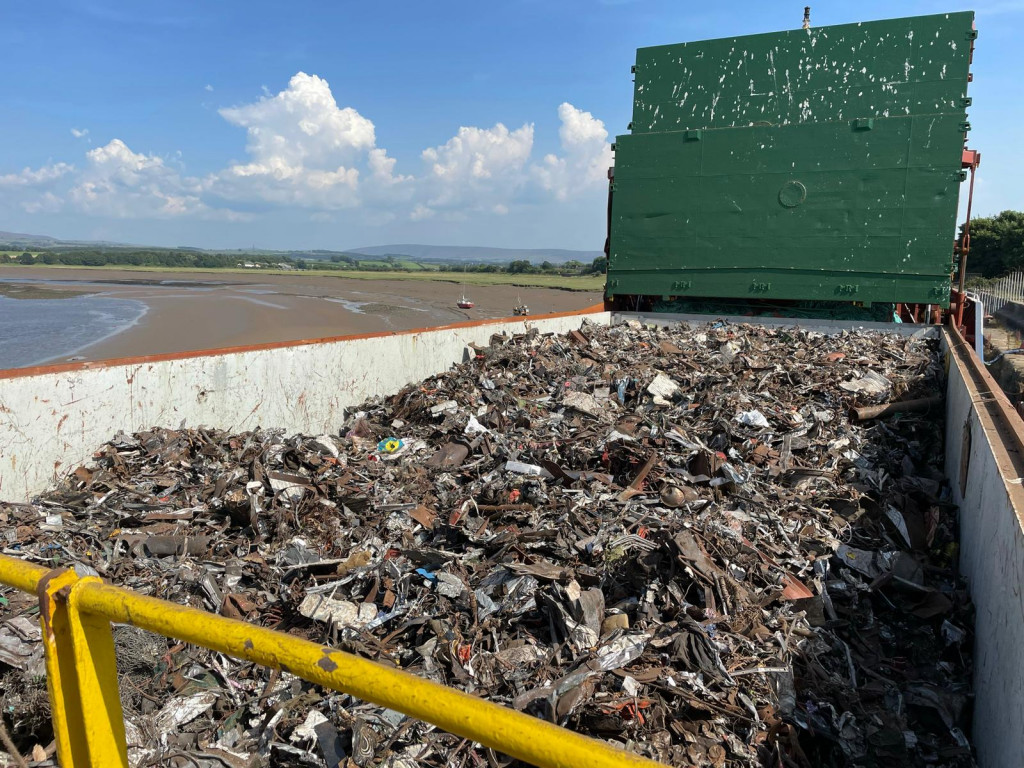For scrap metal to be efficiently recycled and prepared for reuse, it had to be processed first. Here at Morecambe Metals, we use a range of industrial metal processing equipment to do this, including metal shredders. Our ability to shred metal on-site allows us to process a multitude of both ferrous and non-ferrous metals in preparation for exportation to steel mills to be recycled into new metal. It also gives us the capability to destroy material beyond recognisability for industries where this is a requirement. Our metal shredders are integral to our operations, but what are they, and how do they work?
How Do Scrap Metal Shredders Work?
Scrap metal shredders are used to reduce the size of scrap metal into manageable, transportable pieces. They come in various sizes, from small machines capable of shredding tin cans and coins to huge models that can operate at 10,000 horsepower and shred up to 4,000 tons of metal a day. These larger machines shred items like automobiles as part of the end of life vehicle recycling process, bulk drums and virtually every other type of scrap metal.
Shredders can have different styles of cutting systems, including horizontal or vertical shafts, single-shaft, double-shaft or even three or four-shaft cutting systems. Shafts can be manufactured with different styles of blade, which usually feature claws of varying thickness, depending on the material that needs to be shredded. Alongside the number of shafts, shredders can be high, medium and slow speed systems – typically, the kinds of shredder used in scrap metal recycling are of the slow-speed, high-torque variety, allowing them to chew through huge pieces of metal effectively.
On an industrial scale, large pieces of scrap metal – like crushed, old cars, for example – are fed into the shredder, moving through the feeder pipe to the shredding section, where heavy-duty hammers spin and break down the metal. The shredded material is separated into ferrous and non-ferrous material using magnets before being carried along conveyor belts and eventually being spewed out of the other side of the machine into two separate piles for further sorting.
The scrap metal shredders used at Morecambe Metals are enormous pieces of equipment. Watch the video below for a better understanding of the scale of industrial scrap metal shredding:
Why Does Scrap Metal Need to Be Shredded?
Scrap metal, particularly the kinds we deal with regularly at Morecambe Metals, are often bulky items that would be illogical to transport in their original state. A good example is an old vehicle, which takes up a lot of space, but once crushed and shredded, is far easier to transport and handle. Shredding drastically lessens the volume of scrap metal, reducing it down to manageable sized pieces.
The shredding process also aids in the separation of ferrous from non-ferrous metals and other materials like rubber, plastics and fabrics. As you can see from the video, the shredder can separate magnetic metals from non-magnetic metals and materials, allowing to extract maximum value from the scrap metal recycling process.
What Happens To Shredded Scrap Metal?
Once shredded, the metal is much easier to transport to a facility where it can be further processed. The non-ferrous material extracted through the shredding process (non-ferrous metals, plastics, foam, glass, aggregates, woods, rubber, textiles and electrical components) is removed for further recycling – helping to divert these materials away from landfills.
The shredded ferrous metals are then sent to a facility to be melted down in a large furnace. This is often best achieved through exportation to steel mills in other parts of the world that can process the material effectively. Here at Morecambe Metals, we work in partnership with our local port to export scrap metal worldwide, which just goes to show how far-reaching our scrap metal recycling services are.
From the furnace, the metal is purified to ensure the material is of high quality and free from contaminates. This is most commonly achieved through electrolysis – which involves using a direct electric current to provoke a non-spontaneous chemical reaction in the material. From here, the metal can be cooled and solidified, ready to be used again as a raw material in the manufacturing of new products.
How The Metal Shredder Contributes to a Circular Economy
Industrial metal shredders – particularly those used by scrap metal recycling companies like us – might not look like they’re doing much to help the environment, but the reality is quite the opposite. Without our shredders, it would be impossible to process bulky pieces of scrap metal at such a high capacity. This means we wouldn’t be able to reduce the scrap metal down into a manageable volume quick enough, and we wouldn’t be able to contribute to the rising demands for scrap metal across the world.
It’s thought that up to 40% of new metal as a raw material in use today has been made from recycled metal, and we must continue to push that percentage upwards if we’re going to preserve the earth’s natural resources. As mentioned earlier, the shredding process helps us effectively separate the non-metal and non-ferrous material from scrap metal, which can also be diverted away from the landfill.
Scrap metal shredding is an integral part of our operations here at Morecambe Metals. If you would like any more information about our work, talk to us on 01524 69191 or get in touch using our online form.




